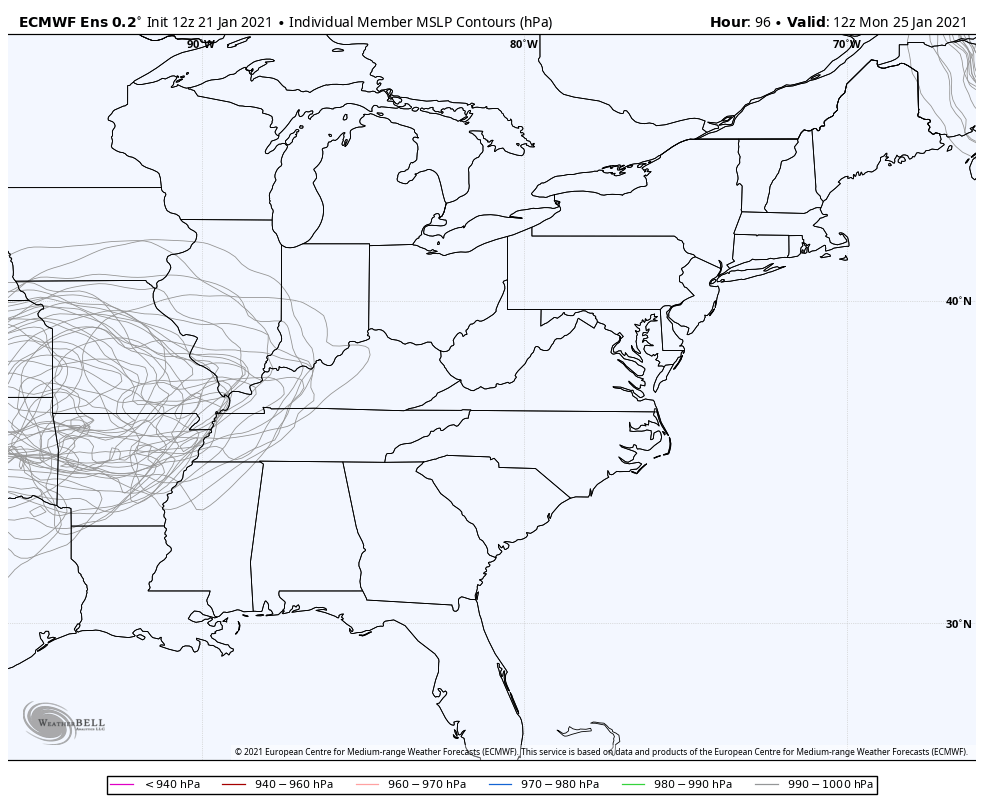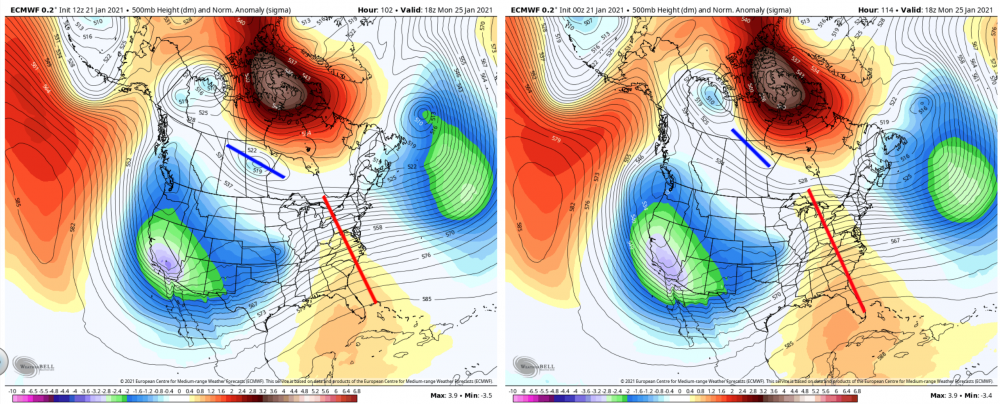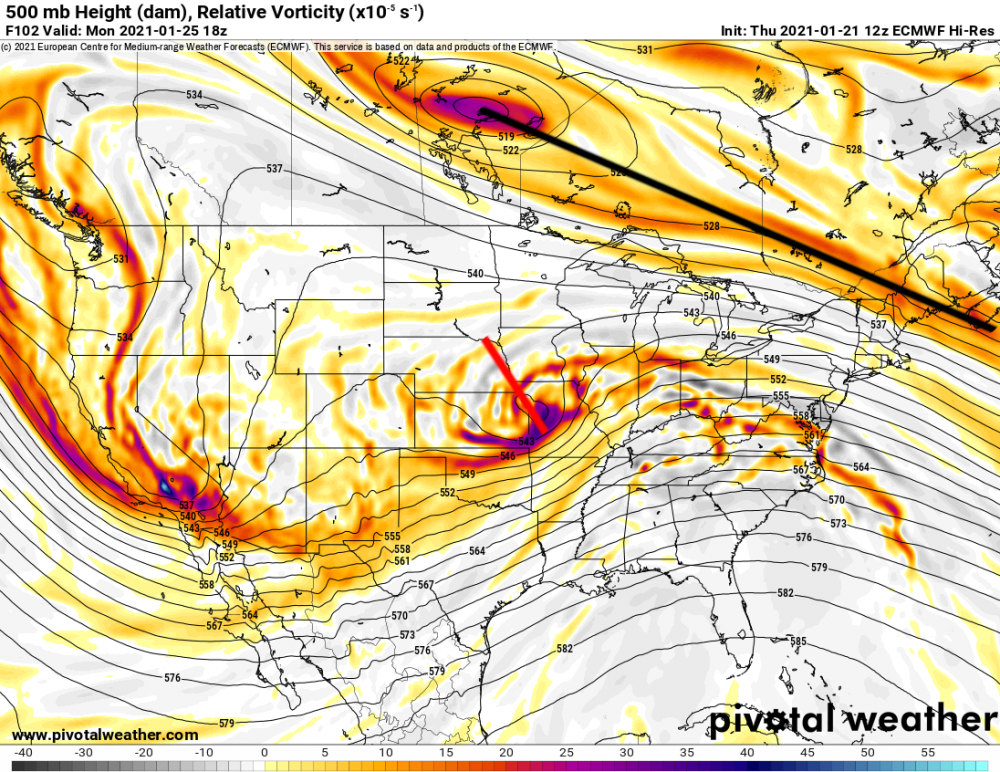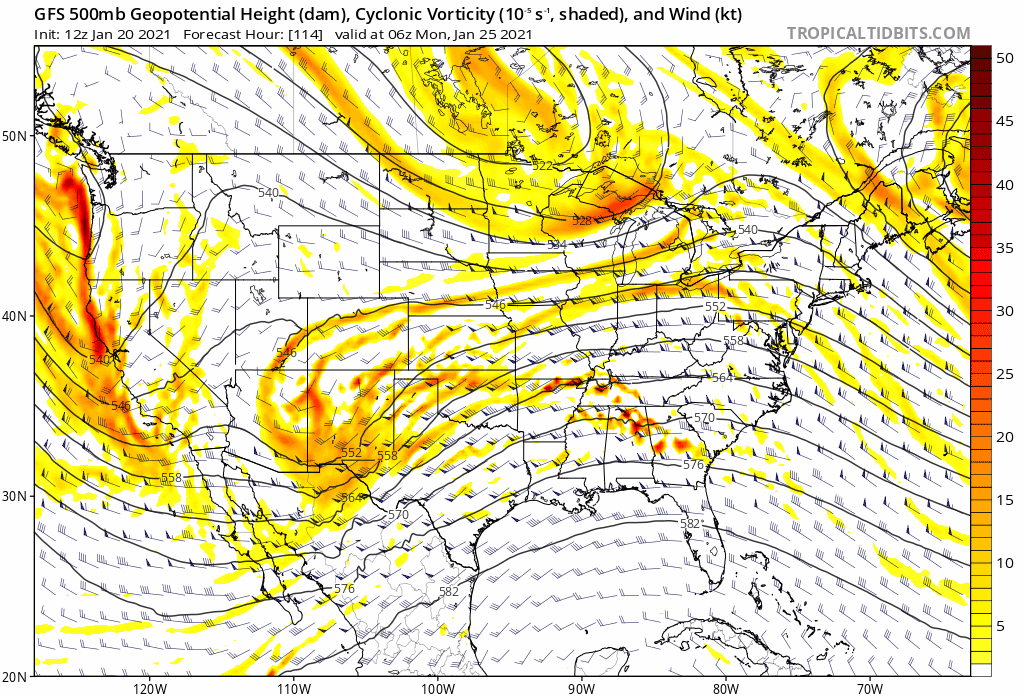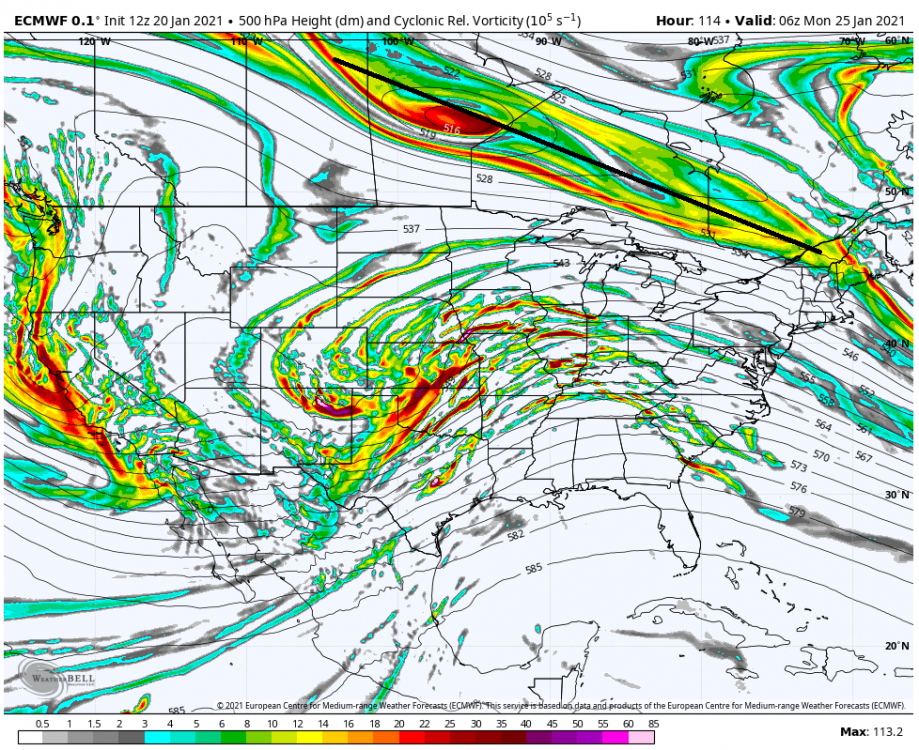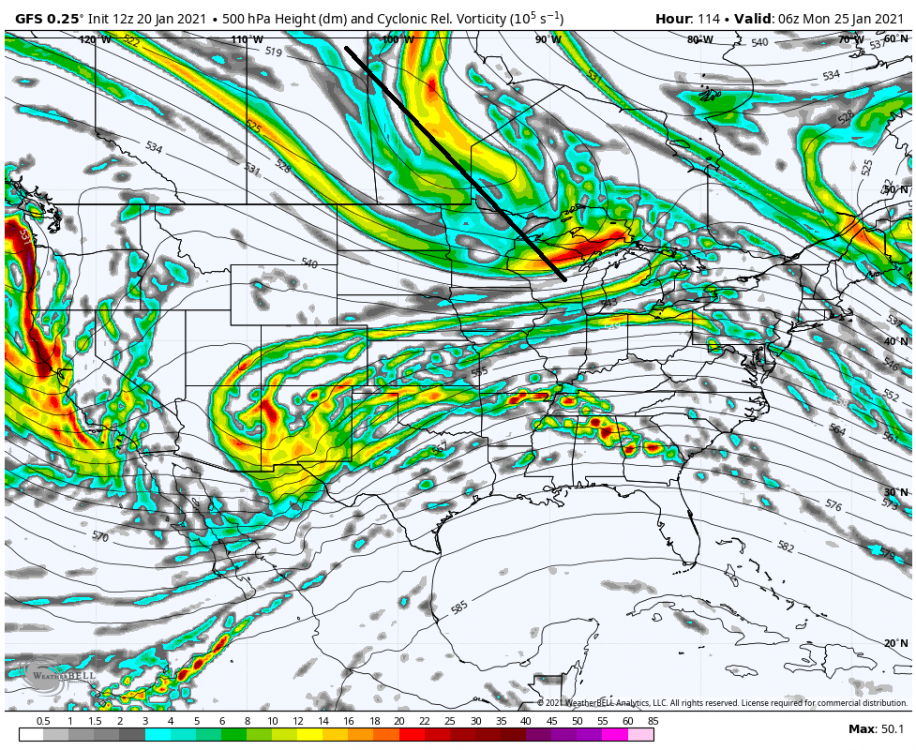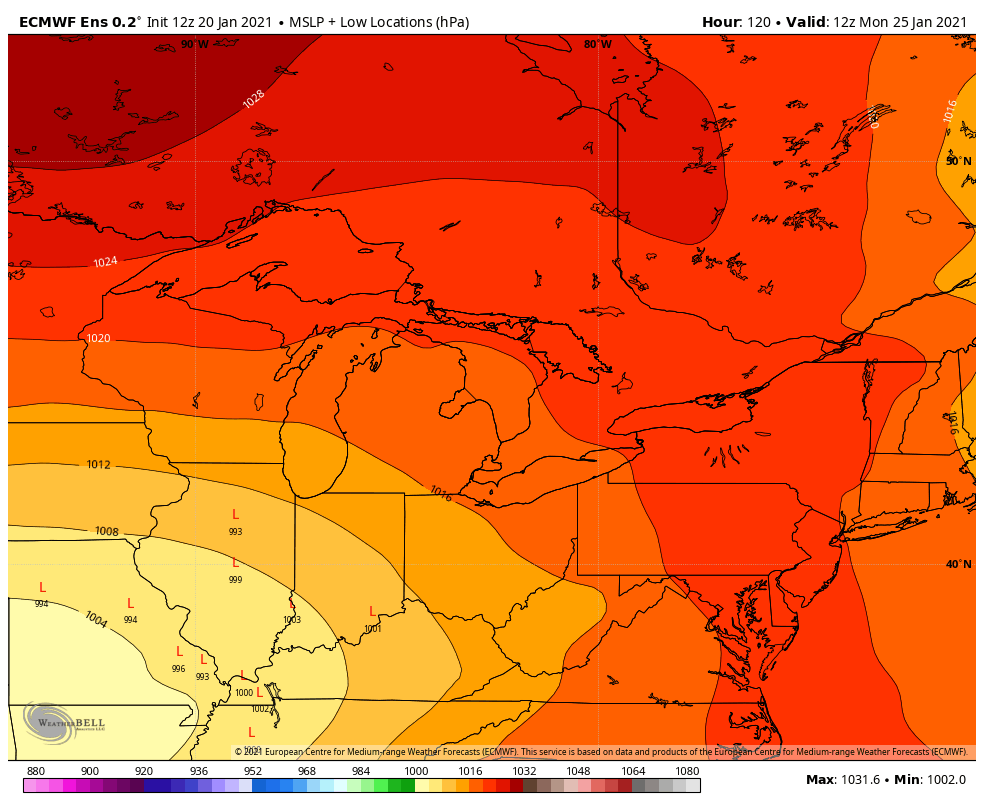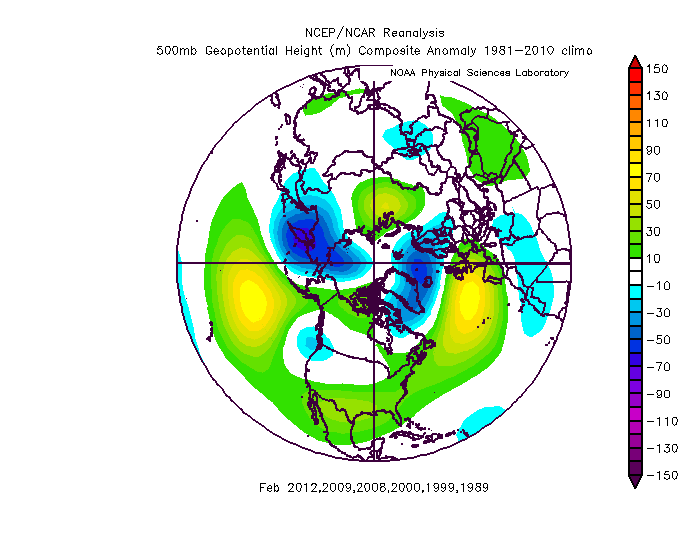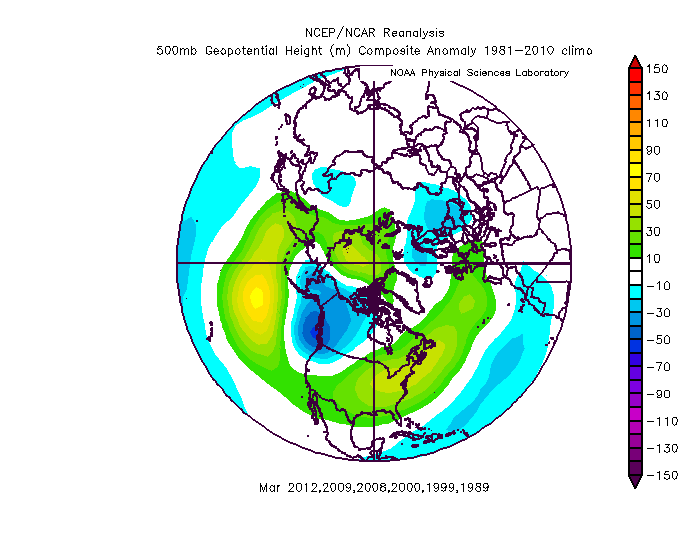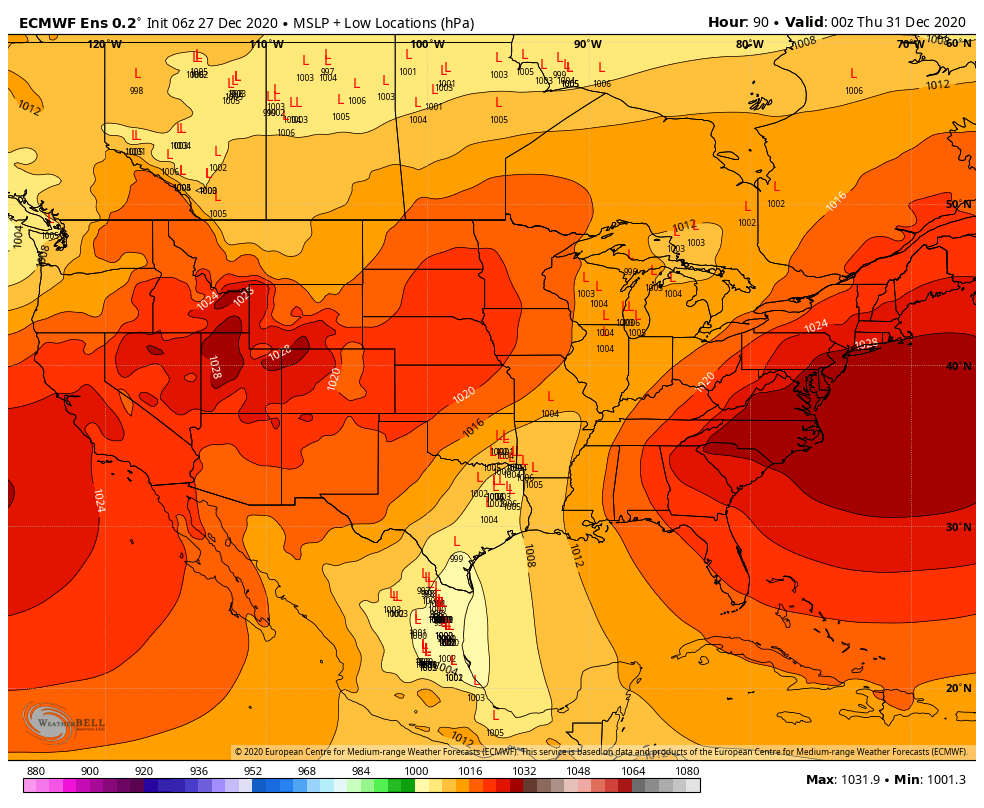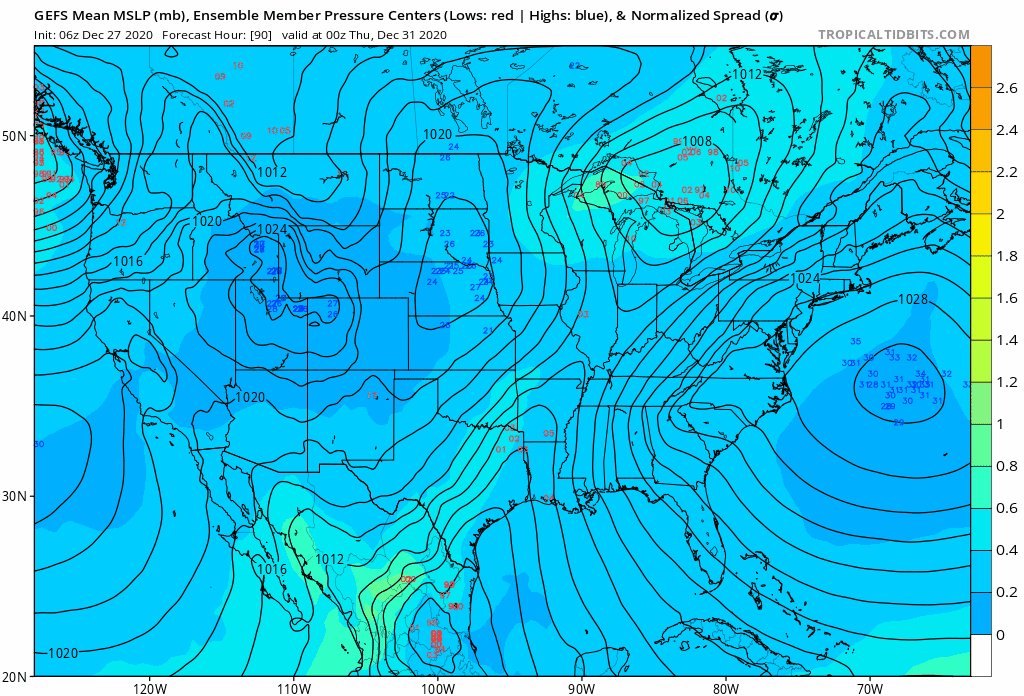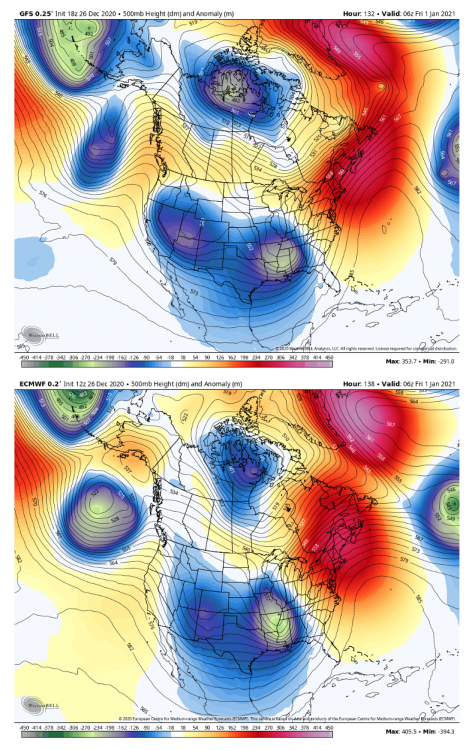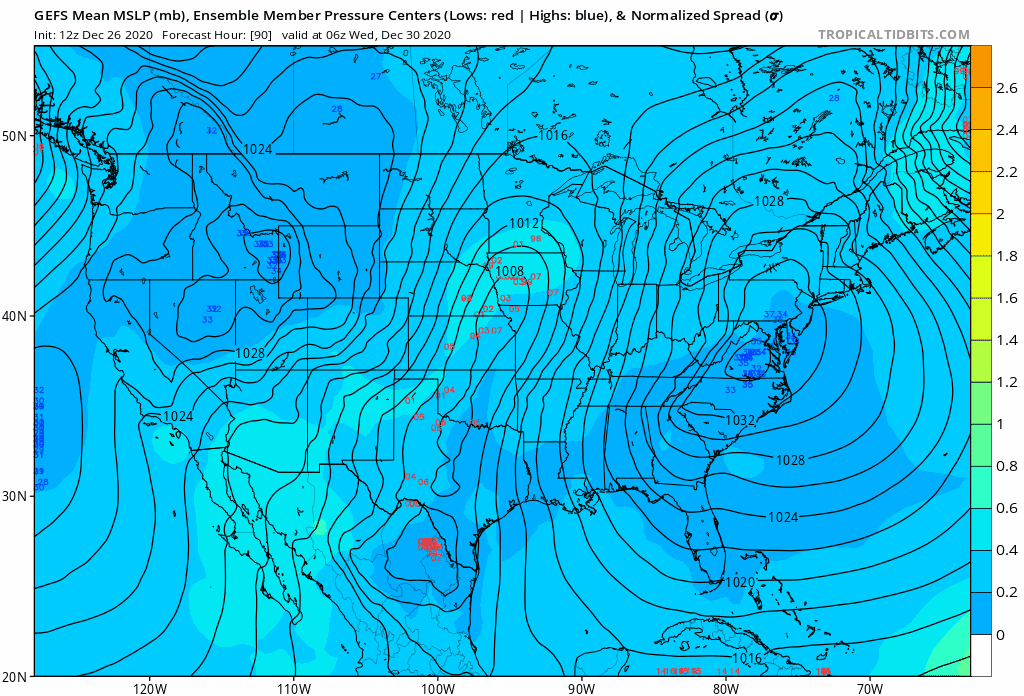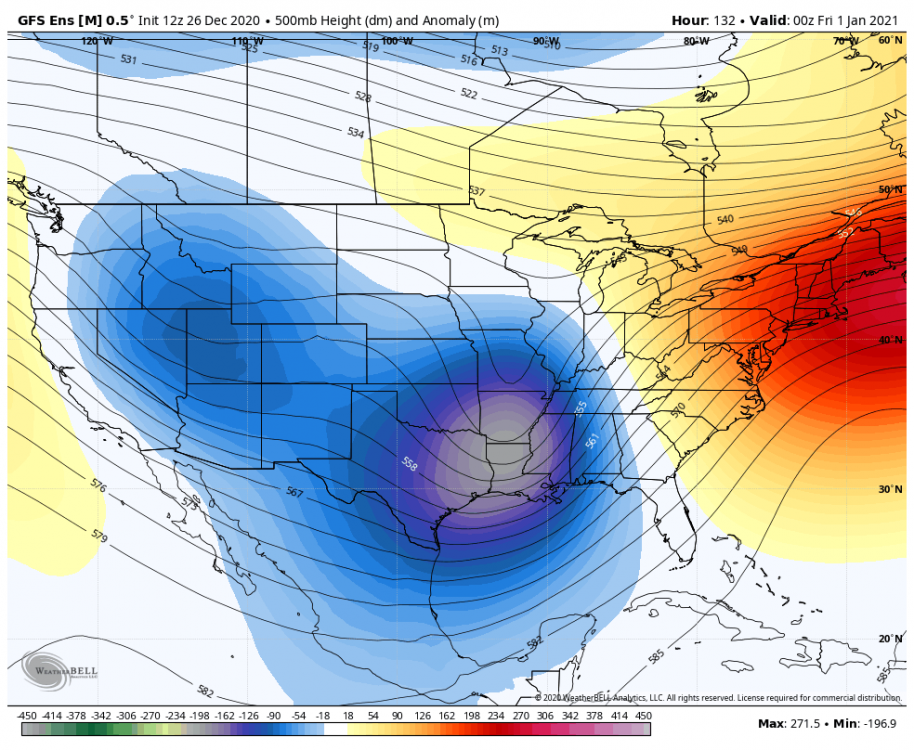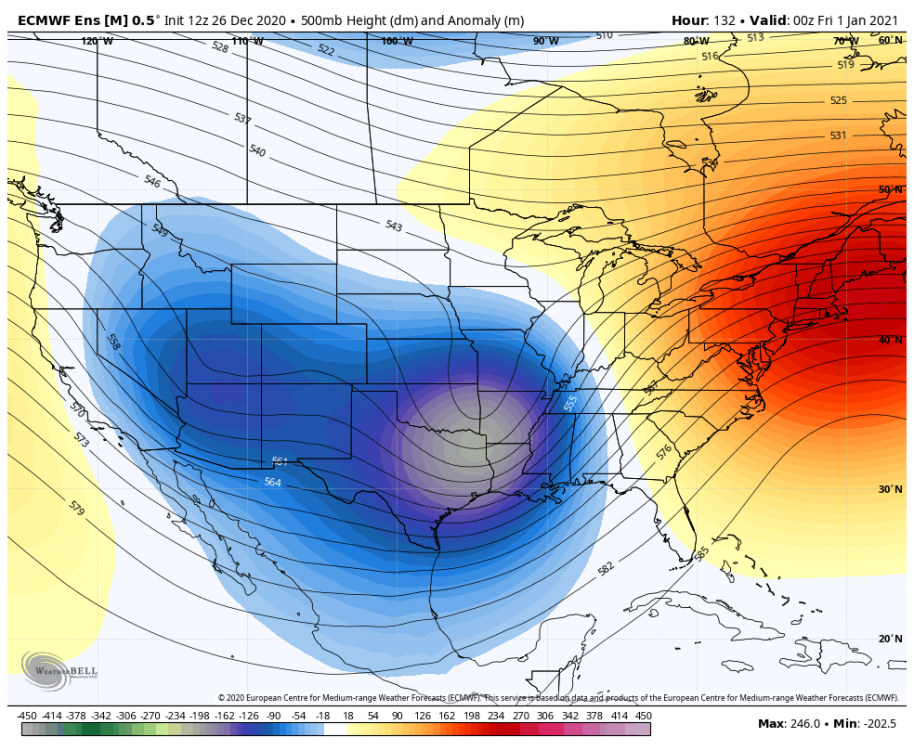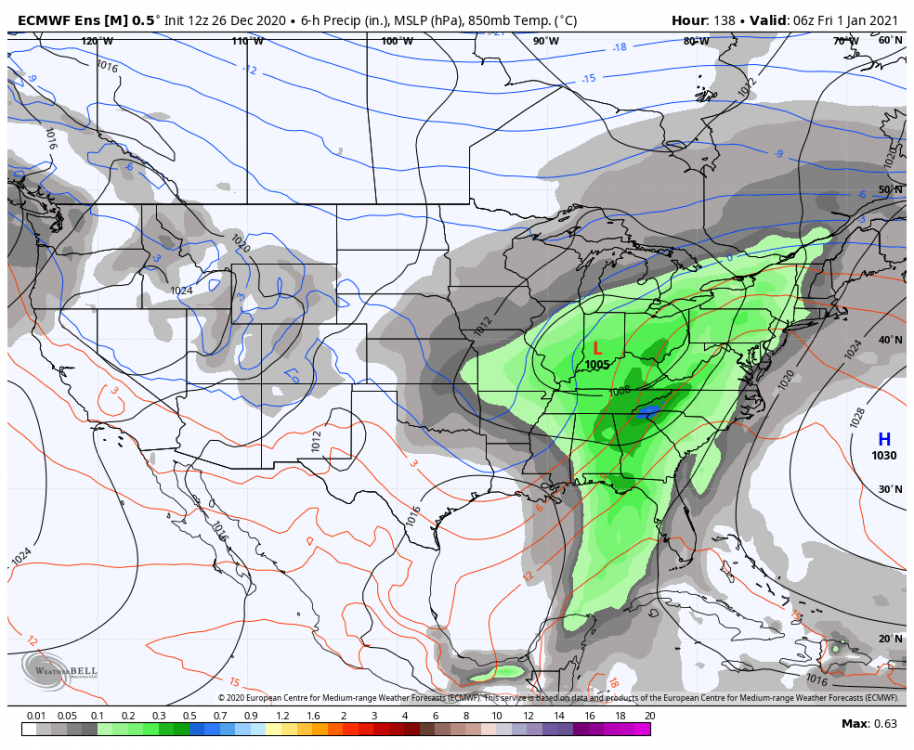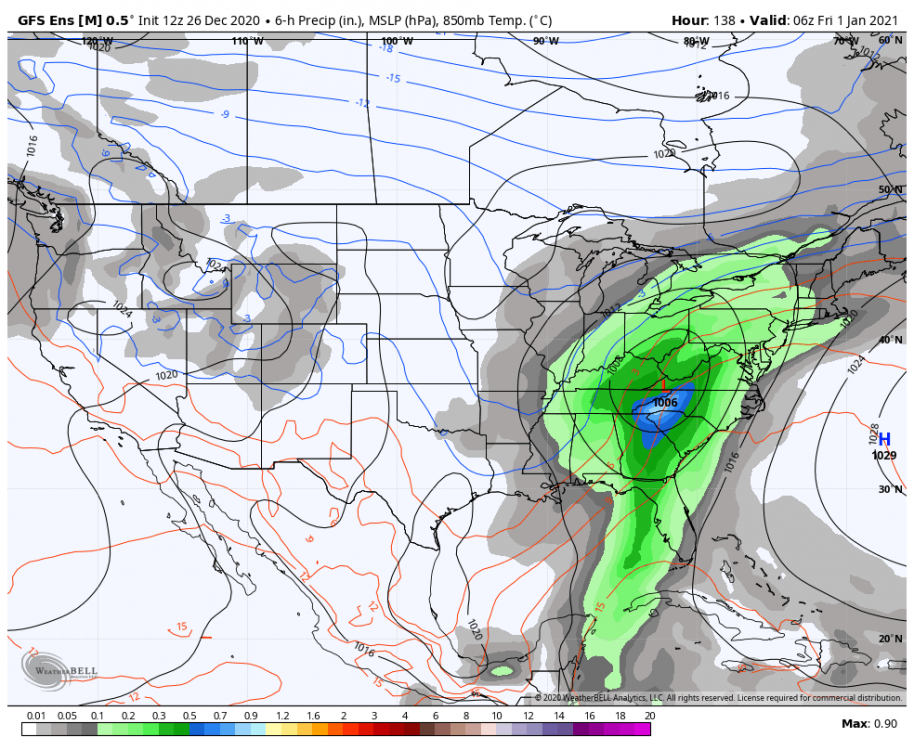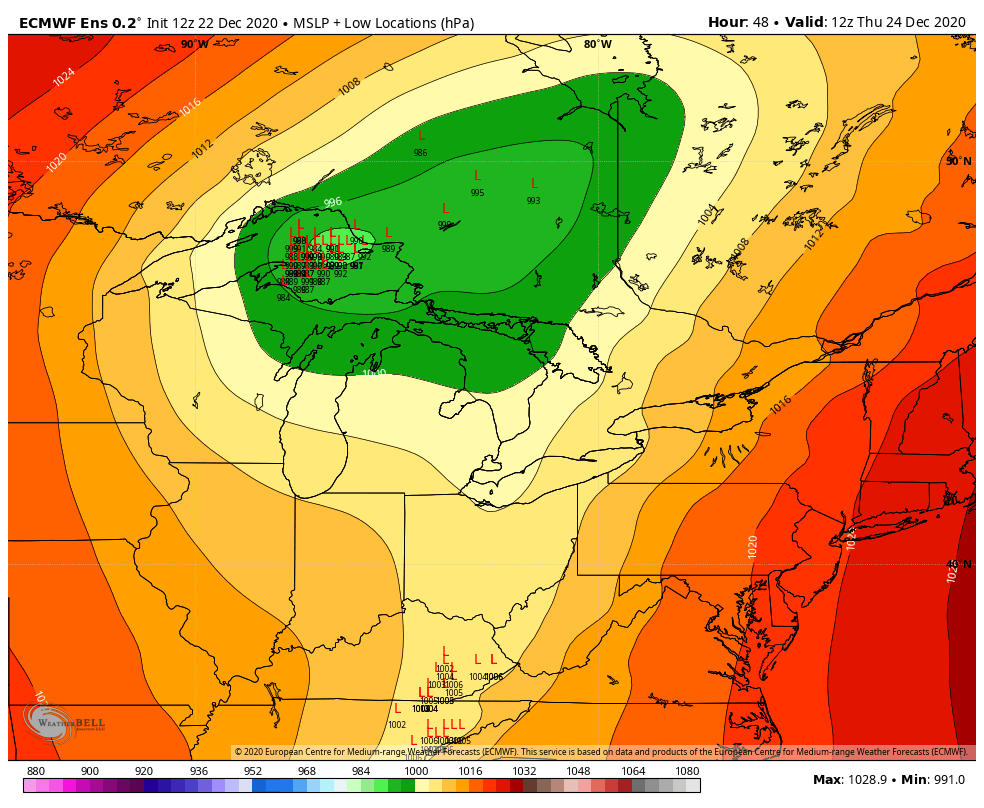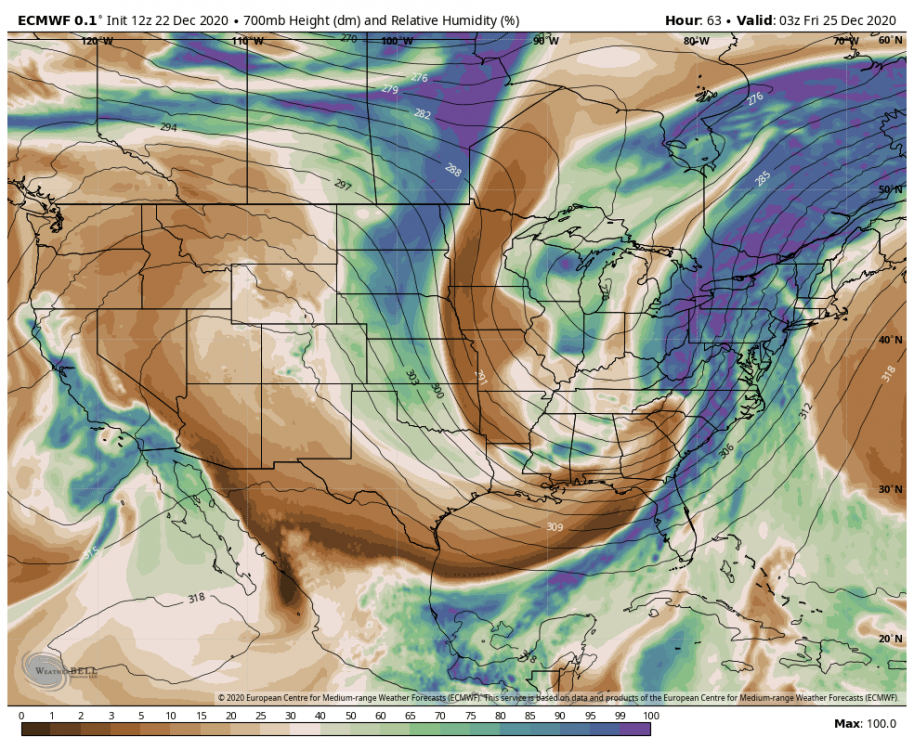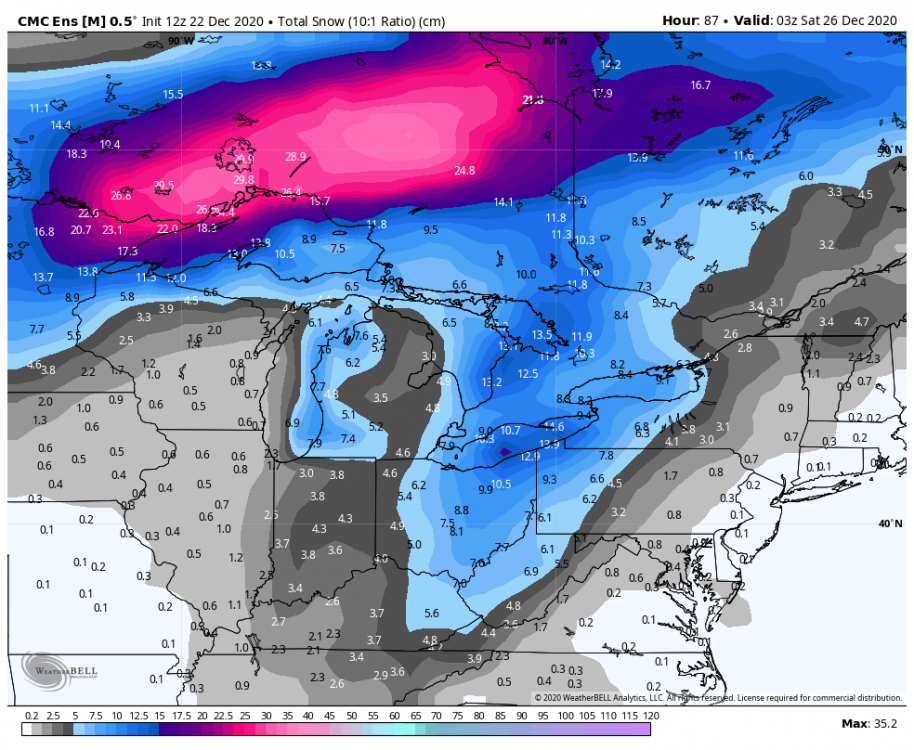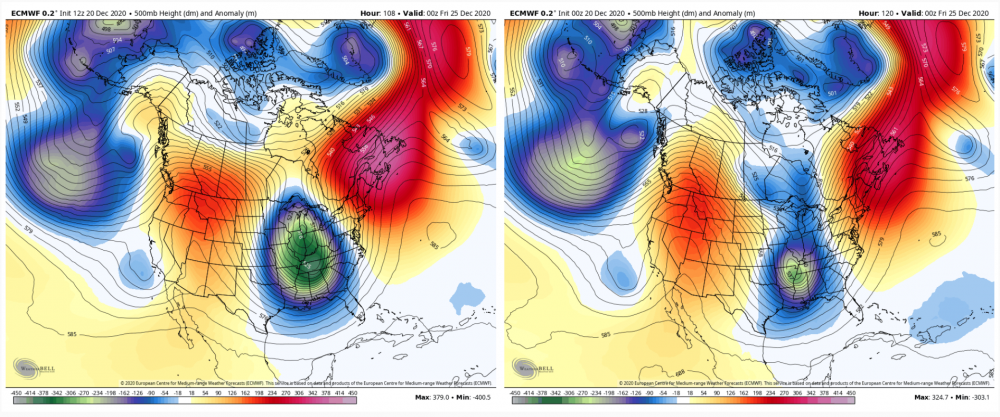-
Posts
1,565 -
Joined
-
Last visited
Content Type
Profiles
Blogs
Forums
American Weather
Media Demo
Store
Gallery
Everything posted by blizzardof96
-
-
-
-
Here’s the 500mb field from the 12z UKMET
-
Very impressive looking UKMET run
-
-
Can clearly see why the 12z ECMWF and GFS tracks are so wildly different. GFS has the northern vort max much further south, which prevents the southern piece of energy from propagating northeast and picking up gulf moisture. Instead, the southern vort gets sheared out upon ejection from the four corners region. This is not the case on the ECMWF.
-
The recent GEFS update involved an increase in resolution (35 to 25 km) and in number of ensemble members (20 to 30). It also included the expansion into subseasonal (35 days) and better stochastic/other physics.
-
-
12z ECMWF came as a big surprise. Gonna need to analyze this system a bit deeper.
-
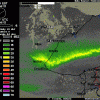
Winter 2020-21 Medium/Long Range Discussion
blizzardof96 replied to Hoosier's topic in Lakes/Ohio Valley
The northward propagation of the plains vort ejection is really being limited by the vortex over Northern Ontario which is being held in place by the west based -NAO. -

Winter 2020-21 Medium/Long Range Discussion
blizzardof96 replied to Hoosier's topic in Lakes/Ohio Valley
This years Nov-Dec MEIv2 came in at -1.2C. Oct-Dec ONI came in at -1.3C. Below are February & March composites from the 6 years since 1979 with Nov-Dec MEIv2 between -1.0C & -1.5C. This gives a good idea of our current "base state" from ENSO... not accounting for any SSW impacts. Because the SSW has been impacting the polar height field (i.e via -AO/NAO) and will continue to do so, I don't think these are a perfect representation of what the overall pattern will look like. However... this 500mb look could certainly show up through the Feb-March period. -
Impressive system. Snow has now started here in Toronto.
-
12z UKMET continues its trend of adjusting the vort max southeast 12z run (valid friday night) 0z run (same timeframe)
-
Can see the elevated 700mb RH and frontogenesis moving ENE on mesoanalysis:
-
GEFS 8 run trend
-
-
-
One of the main differences between the GFS & ECMWF relates to the confluence zone across Quebec. The ECMWF has a much stronger eastern ridge while the GFS has a weaker ridge and a confluence zone further south which keeps the GFS low track further southeast.
-
Can see the wide spread in GFS ensemble low tracks for the secondary low propagating out of the Gulf of Mexico. Spread is high in both track location and MSLP intensity.
-
Seeing a strong secondary low signal emerging out of the GOMEX on both the 12z GEFS and EPS. The GEFS has the trough axis and subsequent ejection further east relative to the EPS. 12z GEFS 12z EPS
-
-
Models have been consistent in showing good moisture transport from both the GOMEX and SE coast. Exact low track will be important for the GTA.
-
-


